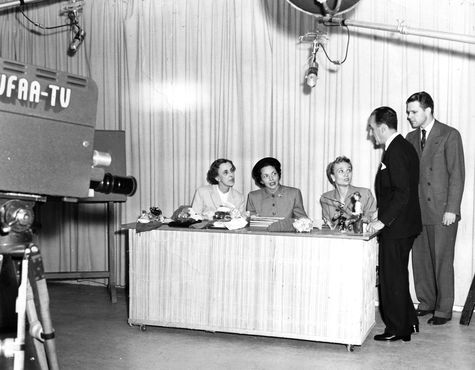For many of us, our smartphones are an integral part of how we interact with and even interpret the world around us. At the DMA, we’ve been using smARTphone tours as a tool to do precisely that–allow visitors to become actively engaged with works of art throughout the Museum.

In 2009, when smartphones were first becoming popular, the DMA decided to experiment with creating tours for visitors on them. The Museum offers free Wi-Fi throughout the building, so we went with a web-based application that would work on any web-enabled smartphone. We gathered videos and audio clips, images, and text related to thirteen works of art in the collection and made them accessible to visitors via smartphones. There is so much fascinating information that can’t be displayed on labels and wall texts, and that first tour demonstrated the exciting possibilities offered by the interactive and multimedia features. Since then, we’ve created smARTphone tours for special exhibitions and added many stops to our collection tour.
Currently on the DMA’s smARTphone tour, you can listen to audio and video introductions for more than seventy-five works of art, learn about the artists and cultures that created them, check out community response projects like poems and sound designs, and look through archival and contextual photographs. Personally, some of my favorite choices include watching Dr. Heather MacDonald discuss why Claude Monet’s painting The Seine at Lavacourt was a failure, listening to sound designs created by UTD students in response to our Indonesian jaraik, and perusing the photographs of Coco Chanel at the Villa La Pausa.
While our initial efforts were well received, in 2011 the Museum embarked on a new phase of development of the smARTphone tours program. We revamped the design and organization, created a feature that allows multiple staff members to publish content, and added over fifty-five new stops to the tour.

From the interface design to the production of content, the DMA’s smARTphone tours are created entirely in-house and bring together staff from many of the Museum’s departments including IT, Education, Curatorial, and Marketing. While IT and Marketing worked on the new look of the tour, staff from the Education and Curatorial departments decided which works of art should be included and developed content. The new tour stops include over one hundred video and audio clips of curators speaking about works of art and artist biographies, and reflect the collaborative efforts of the various departments.

It was thrilling to see all of our hard work come to fruition when the new stops were released in February 2012 at the opening of the exhibition Face to Face: International Art at the DMA. The real highlight, though, is to see visitors using it. While conducting an evaluation of the smARTphone tour, I spoke with a mom and her twin 9-year-old boys, who said they had looked at every video in Face to Face and wanted to look at more when they got home!

Feedback from our visitors is especially important, and periodic evaluation has played an integral role in the development of the tours. From user experience to content, we’ve assessed visitor experiences with the smARTphone tours four times over the past several years. Each time we learn something new.
If you’re at the DMA or at home, be sure to check out the smARTphone tour at dma.mobi.
Laura Bruck is a museum consultant and also adjunct assistant professor of art history at the University of Dallas.





























